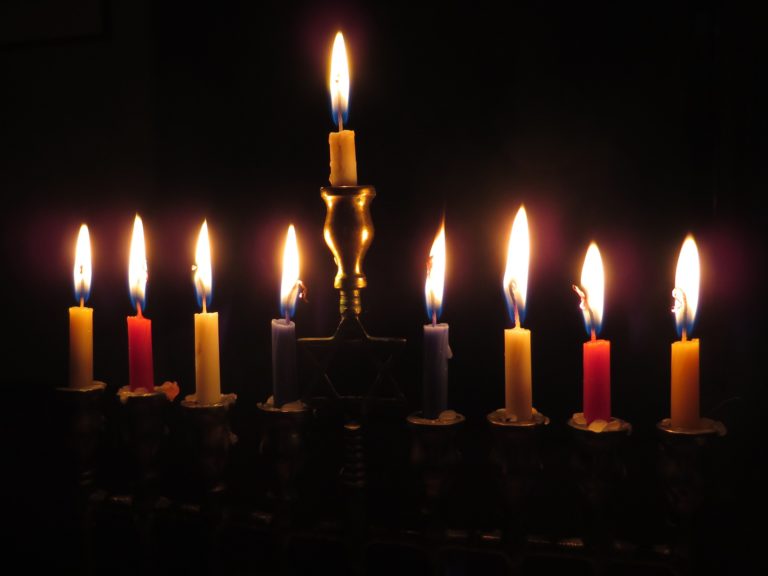
When the Greeks entered the Beis Hamikdash, they destroyed whatever they could. Stones were shattered, seals were broken, and idolatrous offerings were brought on the mizbeach. Among all of that, a Jew arrives. The Gemara shares a story about Miriam bas Bilga.
ת”ר מעשה במרים בת בילגה שהמירה דתה והלכה ונשאת לסרדיוט אחד ממלכי יוונים כשנכנסו יוונים להיכל היתה מבעטת בסנדלה על גבי המזבח ואמרה לוקוס לוקוס עד מתי אתה מכלה ממונן של ישראל ואי אתה עומד עליהם בשעת הדחק וכששמעו חכמים בדבר קבעו את טבעתה וסתמו את חלונה…אלא למ”ד מרים בת בילגה שהמירה דתה משום ברתיה קנסינן ליה לדידיה אמר אביי אין כדאמרי אינשי שותא דינוקא בשוקא או דאבוה או דאימיה
There was an incident with Miriam, the daughter of Bilga (The Levi), who left Judaism and married a Greek soldier. When the Greeks entered the Sanctuary of the Beis Hamikdash, she was kicking her feet against the altar and saying, ‘Wolf! Wolf! For how long will you consume the resources of Israel but you do not stand with them in a crisis!’ And when the Rabbis heard this, they removed her father, Bilga, from his position… Because of the incident with Miriam, do we punish the entire family because of his daughter? Abaye said yes, as people say the speech of a child in public is learned from his father or his mother. Sukkah 56b
Miriam’s offense results in her father’s removal because he is considered to be the source of her inappropriate behavior. Throughout halacha, there is a consistent emphasis placed on the value of the Jewish home and the lessons that are taught within it. Even a question as basic as who lights the menorah is filtered by this mindset.
תנו רבנן מצוות חנוכה נר איש וביתו, והמהדרין נר לכל אחד ואחד, והמהדרין מן המהדרין – בית שמאי אומרים יום ראשון מדליק שמונה מכאן ואילך פוחת והולך, ובית הלל אומרים יום ראשון מדליק אחת מכאן ואילך מוסיף והולך
The Sages taught that the mitzvah of lighting Chanukah candles is on a man and his household. And the preferred practice is that each person in the house has their own light, and the ideal beyond that, according to Beis Shammai, is that on the first day you light eight candles, and from there, you diminish one a day, and according to Beis Hillel, who says that on the first day you light one candle and from there you increase. Shabbos 22b
אולם לעניות דעתי, נראה פשוט שהלשון ‘נר איש וביתו’ כלל אינה מכוונת לבית הפיזי, כהבנת הפני יהושע, כי אם לבני הבית – נר איש ומשפחתו…כפי שראינו, קבעו חכמים שהמהדרים במצוות נר חנוכה מדליקים נרות כמספר אנשי כל הבית. ויש לשאול, הידור זה מה טיבו? מה ההידור בכך שמדליקים נרות כנגד מספר אנשי הבית? נראה לומר, שההידור הוא עצם הריבוי בנרות. ענין המצוה הוא פרסומי ניסא, וככל שיש יותר אור הדבר בולט יותר, ויש בכך יותר הידור.
In my humble opinion, it seems simple that the language of ‘the lights of a man and his household’ generally does not refer to the physical house, as is the understanding of the Pnei Yehoshuah, but rather to the people of the house—the lights of a man and his family…As we have seen, the Chachamim established the ideal of the mitzvah that each person in the house lights their own candles. We must ask, what is the good of this ideal? What is the beautification in having as many menorahs as members of the household? It seems to say that the beautification is the increase of candles itself. The whole idea of the mitzvah is publicizing the miracle, and the more light there is, the more it is publicized, and therein lies more beauty.
Rav Asher Weiss, Inyanei Chanukah
The idea is simple—the more candles we light, the more we have publicized the miracles of Chanukah, and so every person in the house in encouraged to light their own menorah. But the story of Miriam bas Bilga adds another insight into this halacha.
Chanukah is about Bnei Yisrael’s commitment to Judaism—despite the influence of Hellenistic Greeks, in the face of harsh regulations against Torah learning, and regardless of an insufficient amount of pure oil. From this perspective, Miriam’s behavior is especially offensive. During a time when the nation was strengthening their resolve, she laughed in their face and took part in the defilement of the Mikdash. In an era where the lessons of the Jewish home were being put to test, Miriam was a symbol of a failed upbringing.
When we encourage each person in the house to light a menorah, we are focusing on their individual Judaism. If the home is the source of our children’s behavior, we will give them their own menorah and teach them to say the brachos themselves. We assess their personal religious engagement and provide them with an opportunity to learn a beautiful lesson. It reminds us of each of our contributions and the value that we have to the nation at large—and that a Jewish home is not a physical structure, but a culmination of the people in it and the mitzvos that they engage in together.